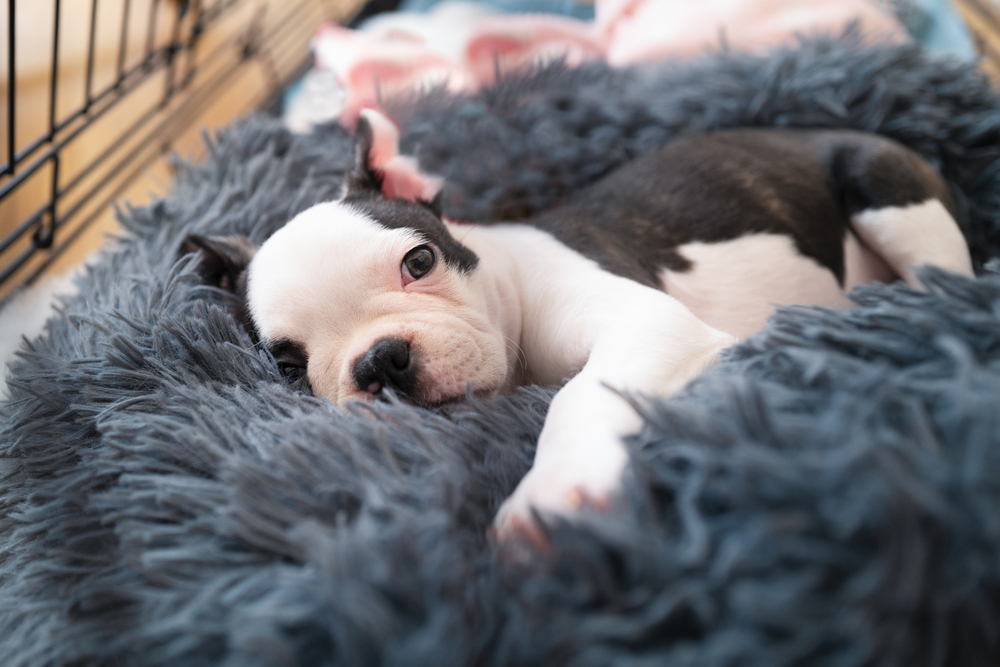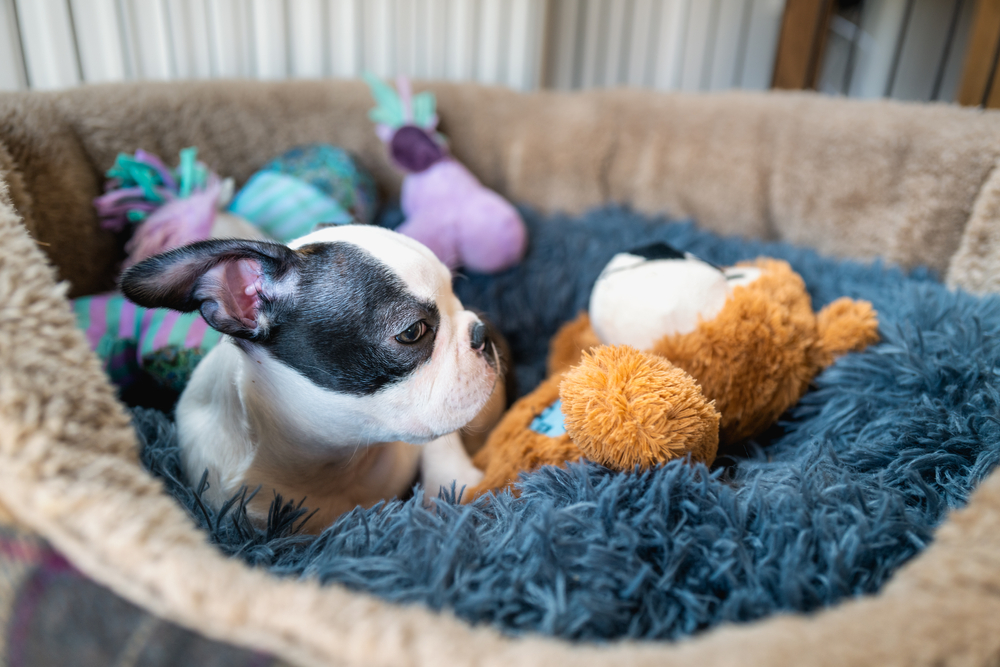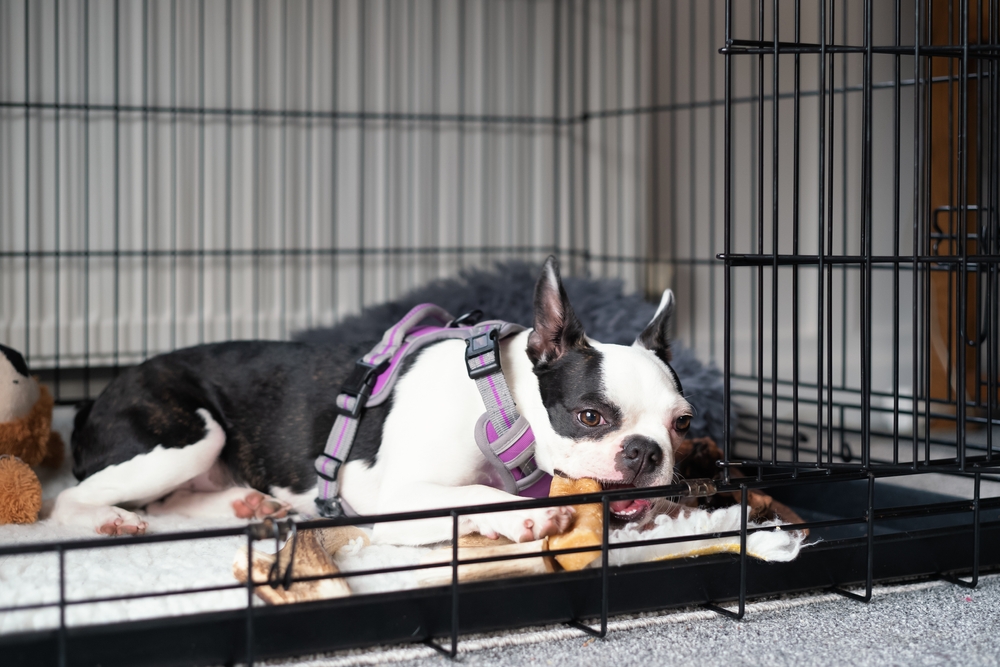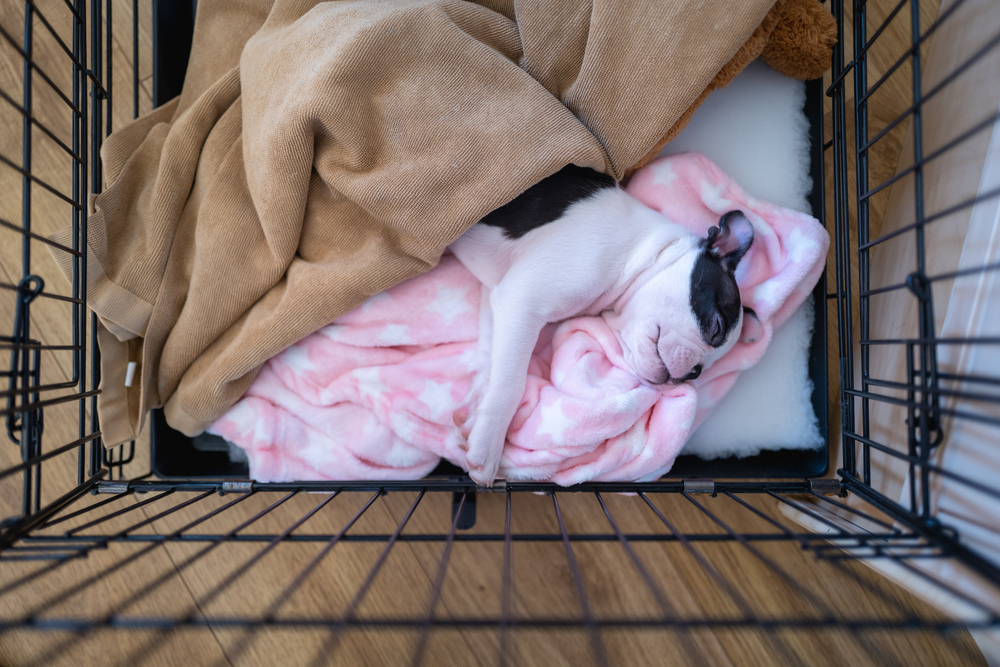
Thinking about the long-term, big picture, you want the puppy you just brought home to mature into a well-behaved adult dog. Crate training your new puppy is a huge part of that. The process of crate training your dog will help to streamline your overall training efforts, ensuring that fewer accidents occur. Contrary to a […]
Thinking about the long-term, big picture, you want the puppy you just brought home to mature into a well-behaved adult dog. Crate training your new puppy is a huge part of that. The process of crate training your dog will help to streamline your overall training efforts, ensuring that fewer accidents occur.
Contrary to a widespread misconception, crate training is not a form of “caging” or imprisoning a dog. Crate training is not cruel, but quite the opposite. Training your puppy to feel comfortable in his crate will provide him with the benefit of having a space to call his own and will greatly reduce unwanted behavior, making housebreaking and other training easier.
This article will cover everything you need to do to make sure that your puppy’s crate is comfortable, and what you need to know in order to get the most out of crate training your puppy.

Crate training a puppy is a process, which typically takes at least a month. For some breeds, however, fully crate training the puppy can take as long as six months. Allow this information to help you fortify your patience. If you experience resistance from your puppy during the crate training process, it isn’t a reflection of your abilities as a new puppy parent. You’re doing great!
Focus on remaining consistent, firm, yet comforting to your puppy. Before long, your puppy will regard his crate as his personal safe haven, and he will soon love it so much that he’ll become territorial about it, in a good way!
Ultimately, your puppy’s crate is his own, private, safe space, and he will soon appreciate this, which we’ll address in the next few sections of this blog. To ensure that your puppy’s crate becomes a tranquil, comfortable safe space for him, the first requirement is to make sure the crate itself is “the right size.”
As you’ll learn in this article, your puppy may go to the bathroom in his crate on the pee pads you provide. This can occur when you have to leave the home and therefore crate him or overnight when you’re sleeping and can’t bring him outside. For this reason, the crate itself should be large enough that one side of it has pee pads, which are a reasonable distance from the bedding that your puppy will be sleeping on.
Take into consideration how big your puppy might get over the course of the next six months. Choose a crate that will still feel comfortable to him when he’s larger. For example, a Newfoundland puppy will be on the large size anyway when you take him home, and can grow to be the size of most medium-sized adult dogs by the time he’s only 5 months old! This type of breed will need a large crate, whereas a Pug will only need a small crate.

Spending time in a crate should be a positive experience for your puppy. Providing soft, comfortable bedding can contribute to the cozy den environment of your puppy’s crate. You can get creative. You might fit an appropriately-size dog bed in the crate or simply arrange blankets to create a sleeping area. Be sure to put your puppy’s favorite toy or stuffed animal in his crate, as well as other comforts, like a worn sweatshirt that smells like you.
It’s also a good idea to drape a sheet or blanket over the crate. You’ll want to make sure there’s still good airflow so that the crate doesn’t get stuffy, so we recommend that you drape a blanket over the area within the crate that has the bedding. Making a den in this way will help your puppy feel cozy and safe when he’s in his crate.
In addition to creating a cozy haven, you should also make sure that your puppy’s crate is a safe space. A few different contributing factors can enhance the safe feeling, or lack thereof, of the crate.
The location of the crate matters. If, for example, you have a large house and your family sleeps on the second floor, putting the crate in the basement might be “too far away” for your puppy to feel safe. Likewise, placing the crate near drafty windows or where there’s too much “hustle and bustle” will jeopardize the coziness of the crate.
Some new puppy parents opt to keep their puppy’s crate in their bedroom so that during the night, their puppies have the comfort of knowing they’re nearby while also enjoying their own comfy space. Depending on the size of your bedroom, this may or may not be a good idea. Use your best judgment.

Your puppy’s crate is more than just the place where he sleeps at night. You’ll also use your puppy’s crate as an aspect of dog training. The trick is to make sure that the crate remains “positive” for your puppy, and that he associates good feelings with being in his crate.
You can do this by giving him a treat whenever he goes into his crate without a fuss. Never use the crate as a tool of punishment. Instead, make sure that you use strategic timing when you put your puppy in the crate.
For example, if your puppy is playing energetically and you put him in his crate, he will not understand why you restricted his playing and he’ll only want to get out of his crate to continue playing. Instead, play with your puppy in a manner that is appropriate in your judgment that will help him exert all of his energy. Then, once he’s tired, gently coax him into his crate and give him a treat. This way, he’ll associate the crate with a cozy haven where he can rest.
The trick with crate training and keeping things positive for your puppy is to incorporate the crate into the overall housebreaking and dog training routine that you’re also establishing with your puppy. Just as you take your puppy outside to go to the bathroom at set intervals during the day, whether he’s expressed a need to “go” or not, you should also pick strategic moments throughout the day to coax your puppy into his crate where he must stay for a fixed period of time.

For example, you could aim for a total of three times throughout the day when your puppy is visibly calm. Coax him into his crate, reward him with a treat, and keep him there for only 10 minutes while you do other things around the home. Then let him out. This will train him to understand that the crate is not a punishment, it’s just part of life, and that going into the crate won’t last forever. This will build trust as well as positive associations with the crate.
We would like to add one warning before we wrap up this article. Your puppy should not be wearing a collar with dangling tags when he’s in his crate, and in some instances, your puppy should not wear a collar or anything around his neck. The reason for this is because the dangling tags could get “stuck” in the crate’s wires, putting your puppy in distress and at risk for being strangled. We recommend that you check with your vet about these dangers, too.
Now you know the best practices for crate training your puppy. From everyone at Petland Florida, we wish you success as you crate train your puppy!